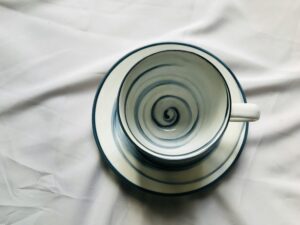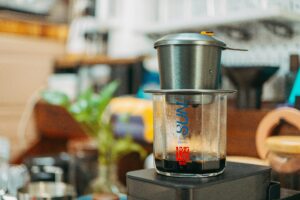Coffee lovers know the joy of a fresh, aromatic cup in the morning. But what many overlook is the importance of a clean coffee maker in delivering that perfect cup. Over time, coffee oils, mineral deposits from water, and even mold or bacteria can build up inside your coffee machine. If not cleaned regularly, these residues can affect the flavor, temperature, and overall quality of your brew—not to mention, it can shorten the life of your machine.
Table of Contents
Whether you use a classic drip coffee maker, a Keurig, or a specialty machine, routine cleaning is essential. In this guide, we’ll walk through how to clean a standard drip coffee maker step-by-step, explain why it matters, and offer tips on how often to do it. We’ll also answer some common questions that come up about keeping your coffee machine in tip-top shape.
Why Cleaning Your Coffee Maker Is Important
Every time you brew a pot of coffee, oils from the coffee grounds coat the internal parts of your machine. While it might not seem like a big deal, these oils can become rancid if left to sit for days or weeks. Add to that the minerals in your tap water—like calcium and magnesium—which form limescale deposits inside the water reservoir, heating element, and tubes.
This combination can lead to several issues. First, it can cause your coffee to taste bitter or stale. Second, it may slow down the brewing process, making your machine less efficient. And third, it can harbor mold and bacteria, which you definitely don’t want near your morning cup. Regular cleaning prevents these problems, keeps your machine running smoothly, and ensures every cup you brew tastes just the way it should—rich, bold, and clean.
Coffee Machine Cleaner Descaler Tablets
How Often Should You Clean Your Coffee Maker?
There are different levels of cleaning that should be done at different intervals:
- Daily or after every use: Rinse and clean the carafe and removable filter basket to remove old coffee oils and grounds.
- Weekly: Give the entire exterior a good wipe-down and rinse removable parts more thoroughly.
- Monthly: Perform a deep clean and descale the internal parts using vinegar or a descaling solution to remove mineral buildup.
If you use your coffee maker multiple times a day or have hard water in your area, you might want to clean it more frequently.
Step-by-Step: How to Clean a Drip Coffee Maker
Cleaning a coffee maker is easier than you might think. You don’t need any fancy tools—just some vinegar, water, dish soap, and a sponge.
Step 1: Empty the Machine
Start by pouring out any leftover coffee and removing the used filter from the basket. Take out the carafe, filter basket, and any other removable components.
Step 2: Wash Removable Parts
Wash the carafe and filter basket with warm, soapy water. These parts often collect the most residue and old coffee oils. If your machine has a reusable filter, scrub it gently to remove any build-up. Let everything air dry or dry it with a clean towel.
If you’re in a hurry, some parts may be dishwasher safe—check your machine’s manual to confirm.
Step 3: Prepare the Cleaning Solution
Fill the water reservoir with equal parts white vinegar and fresh water. Vinegar is a natural cleaner and works wonders in breaking down limescale and killing bacteria inside your coffee machine.
Step 4: Run a Brew Cycle
Start a brew cycle just as if you were making a pot of coffee. Let the vinegar-water solution run halfway through the cycle, then pause the machine. Let it sit for 30 minutes to an hour. This gives the vinegar time to work on the buildup inside.
After the pause, complete the brew cycle so the rest of the solution runs through the system.
Step 5: Rinse with Clean Water
Once the vinegar solution has cycled through, pour it out and rinse the carafe. Now, fill the water reservoir with plain, fresh water. Run two to three full brewing cycles using just water. This step is crucial—it ensures that all the vinegar is flushed out so your next pot doesn’t taste sour.
You can repeat the rinse cycle a third time if you still smell vinegar after the second.
Step 6: Wipe Down the Machine
Use a damp cloth to wipe the exterior of the machine, especially around the warming plate and control buttons. Coffee drips and dust often settle in these areas, and a quick wipe helps keep the whole unit clean and looking good.
Tips for Maintaining a Clean Coffee Maker
Keeping your coffee maker clean doesn’t have to be a big task if you stay consistent with maintenance. Always empty and rinse the carafe after each use—don’t let coffee sit in it all day. If your machine uses a water filter, replace it as recommended. Using filtered water in general helps reduce mineral deposits and slows down scale buildup.
Also, don’t forget about the machine’s lid, spout, and any crevices that might collect splashes or grime. A small brush or toothbrush can be handy for those hard-to-reach spots.
Can You Use Store-Bought Descalers?
Yes, there are commercial descaling solutions made specifically for coffee machines. These products are convenient and often more effective at removing mineral deposits than vinegar. They’re especially useful if you have hard water or a high-end coffee maker. Just be sure to follow the instructions on the packaging, and rinse thoroughly afterward.
FAQs About Cleaning Coffee Makers
Can I use lemon juice instead of vinegar?
Lemon juice can be used in place of vinegar since it contains citric acid, which also dissolves limescale. However, it may leave behind a stronger citrus scent, and it’s generally more expensive than vinegar. If you use lemon juice, be sure to rinse the machine thoroughly with water afterward.
What happens if I don’t clean my coffee maker?
If left uncleaned, your coffee maker can accumulate bacteria, mold, and mineral deposits. This can result in off-tasting coffee, slower brewing times, and, in the worst-case scenario, a machine that stops working. Regular cleaning extends the life of your coffee maker and keeps your coffee tasting great.
Is vinegar safe for all coffee machines?
Vinegar is safe for most drip coffee makers. However, some high-end espresso machines or specialty models may have specific cleaning requirements. Always refer to your machine’s user manual before descaling with vinegar or any other cleaning agent.
How do I know it’s time to descale?
Telltale signs that your coffee maker needs descaling include longer brewing times, gurgling noises, or a noticeable change in the taste of your coffee. Some modern coffee makers even have indicator lights that tell you when it’s time for a deep clean.
Can I clean my coffee maker with baking soda?
Baking soda is mildly abrasive and good for scrubbing certain parts like the carafe or exterior, but it’s not ideal for descaling the internal parts of the coffee machine. Stick with vinegar or a commercial descaler for cleaning the internal components.
Final Thoughts
A clean coffee maker is the secret ingredient to better-tasting coffee. It not only improves flavor but also keeps your machine in good health for years. Fortunately, it doesn’t take much time or effort—just a little vinegar, water, and routine care. Whether you’re a casual coffee drinker or a full-blown aficionado, making coffee in a sparkling-clean machine is worth the extra few minutes.
So, the next time your coffee doesn’t taste quite right, don’t blame the beans. It might just be time to give your coffee maker a well-deserved clean.







